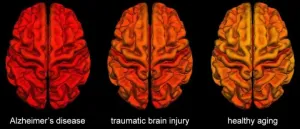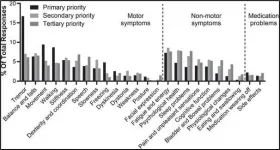(Press-News.org) MINNEAPOLIS/ST.PAUL (04/26/2021) -- A new study by five doctoral students in neuroscience at the University of Minnesota Medical School calls attention to a lack of regulation and unknown long-term health effects of tear gas. Based on their research, the group recommends changing the protocols around the use of tear gas as a crowd control measure at both the local and national level.
"Following the murder of George Floyd and the protests in our city, we felt compelled to dig into the police force used during those protests. We are trained to look at data and draw conclusions," said Jennifer Brown, a graduate student in the U of M Medical School's Graduate Program in Neuroscience and lead author of the study. "Investigating the use of tear gas on crowds was something we felt we could contribute to this social justice movement."
After a search through peer-reviewed scientific articles, news sources and legislative documents, the team published their findings in the Journal of Science Policy & Governance, which included that:
there are few studies examining the long-term impact of tear gas on human health and the environment;
the information that was available indicated that exposure to these chemicals can have long-term physiological and mental health effects and may even result in death following prolonged exposure;
and, there is an absence of robust policies to govern their use in domestic policing in the United States and a lack of regulatory oversight.
"Tear gases are understudied in both the environmental and human health fields, despite their widespread use," explained Brown. "Changes to regulations on manufacturing and deployment of chemical demonstration control agents are needed to protect human health and civil liberties."
Tear gas, also known as chemical demonstration control agents (DCAs), refers to a number of compounds that can cause irritation and inflammation to the eyes, nose, skin, throat and lungs. Though they have been banned from use in war by the 1925 Geneva Protocol, they are still commonly used by domestic law enforcement agencies for crowd control. Yet, there have been numerous calls for more research regarding the toxicity of these chemical agents, especially to vulnerable groups such as pregnant women, children and people with underlying health conditions, such as asthma. Discussions surrounding the use of tear gas were especially prominent these past two years, given that these protests coincided with the ongoing COVID-19 pandemic.
"Most tear gases attack the upper respiratory tract, so using them during a respiratory pandemic could increase the spread of disease, making them more dangerous," said Roman Tyshynsky, another U of M Medical School graduate student and co-author of this study.
DCAs can also have a negative impact on the environment. Previous studies suggest that these compounds are toxic to plant and animal life and may persist in soil and water long after initial use. Yet, similar to studies of its human health effects, its impacts on the environment are vastly understudied. "In some situations, potentially toxic substances were left to be washed away into storm drains and into rivers, with little understanding of the full dangers to the environment," said Tyshynsky.
As part of their study, Brown and colleagues propose a range of policy recommendations that either limit the use of tear gas by ensuring their deployment follows stringent protocols or ban their use entirely. In particular, they stress that chemical weapons, such as tear gas, should always be prohibited during pandemics. An op-ed in the Scientific American shares the personal motivations that led to their study as well as these recommendations.
"None of us were prepared for the scale of the research and regulatory gaps. Now that we are more aware, we are excited to spread that awareness and to fight to change long-ingrained policies," Brown said.
INFORMATION:
About the University of Minnesota Medical School
The University of Minnesota Medical School is at the forefront of learning and discovery, transforming medical care and educating the next generation of physicians. Our graduates and faculty produce high-impact biomedical research and advance the practice of medicine. Visit med.umn.edu to learn how the University of Minnesota is innovating all aspects of medicine.
A NUST MISIS professor was part of an international research team that has found evidence for the existence of the Zeeman spin-orbit coupling in antiferromagnetic conductors. This work may pave the way for the next generation of electronics. The study was published in npj Quantum Materials.
The electron possesses two fundamental properties: charge and spin. Conventional electronic devices use only the charge of electron for information processing. In recent years, an enormous research effort has been focused on building fundamentally new electronic devices (often called "spintronic devices") that would specifically exploit spin properties in addition to charge degrees of freedom. Transfer from conventional electronics to spintronics technology opens the possibilities to construct devices ...
BROOKLYN, New York, Thursday, April 22, 2021 - Rising sea levels and more powerful cyclonic storms, phenomena driven by the warming of oceans due to climate change, puts at immediate or potential risk an estimated 680 million people living in low-lying coastal zones (a number projected to reach more than one billion by 2050). In nations like Bangladesh these populations are already moving to escape sea-level rise.
In a new study, "Modeling human migration under environmental change: a case study of the effect of sea level rise in Bangladesh," researchers led by Maurizio Porfiri, an engineer at ...
Blood transfusions are a common procedure in medical practice in which donated blood is used to replace blood lost to injury or surgery or to treat serious medical conditions. The procedure is not performed as routinely in the treatment of pet cats - but, as in people, can be lifesaving. The availability of donors has been a limitation in primary care veterinary practice, but with the growth of blood banks providing greater access to feline blood, the procedure is likely to become more commonplace.
To address the need for authoritative guidance, not only on best practice but also some important considerations beyond the clinical procedure itself, the International Society of Feline Medicine (ISFM) has today published consensus guidelines in the Journal ...
From Cat's-Whisker detectors in the early 1900s to electronic circuit chips in modern-day mobile phones, electronic devices have been modified in myriad creative ways to adapt to the needs of humankind. Apart from increasing the efficiency of conventionally used semiconductors such as silicon, recent research has focused on exploring more cost effective semiconductor materials. In tune with these requirements, a new publication in Nature Materials has successfully tweaked low cost semiconducting materials, quite similar to the composition of plastic, into conducting electricity more efficiently than before.
Solar cells have the property to convert ...
A study by a University of Illinois Chicago pediatric dentist has shown a novel way to track potential COVID-19 cases -- testing children who visit the dentist. The study also showed an over 2% positivity rate for the asymptomatic children tested.
Dr. Flavia Lamberghini, UIC clinical assistant professor in the department of pediatric dentistry, has co-authored the article, "Severe acute respiratory syndrome coronavirus 2 infection in asymptomatic pediatric dental patients," in the April 2021 issue of the Journal of the American Dental Association. Co-authors are Dr. Fernando Testai, UIC professor ...
Brain changes in people with Alzheimer's disease and in those with mild traumatic brain injuries (TBIs) have significant similarities, a new USC study shows, suggesting new ways to identify patients at high risk for Alzheimer's. The findings appear this week in GeroScience.
TBIs, which affect over 1.7 million Americans every year, are often followed by changes in brain structure and function and by cognitive problems such as memory deficits, impaired social function and difficulty with decision-making. Although mild TBI -- also known as concussion -- is a known risk factor for Alzheimer's disease, ...
Amsterdam, April 26, 2021 - Individuals with Parkinson's disease (PD) face a wide range of symptoms and challenges. A team from Parkinson's UK, including several Patient and Public Involvement (PPI) contributors, surveyed patients to find out which PD symptoms troubled them most and how priorities may change with condition duration. Their goal was to identify where improved treatments and strategies are most needed to help maintain independence and quality of life. They report their findings in the Journal of Parkinson's Disease.
"While PD has some common features such as tremor, rigidity, and bradykinesia, the disease is highly varied, with each individual experiencing their own unique blend of symptoms ...
Violent continental collisions and volcanic eruptions are not things normally associated with comfortable conditions for life. However, a new study, involving University of Tennessee, Knoxville, Associate Professor of Microbiology Karen Lloyd, unveils a large microbial ecosystem living deep within the earth that is fueled by chemicals produced during these tectonic cataclysms.
When oceanic and continental plates collide, one plate is pushed down, or subducted, into the mantle and the other plate is pushed up and studded with volcanoes. This is the main process by which chemical elements are moved between Earth's surface and interior and eventually recycled back to ...
A Lancaster University professor has introduced a new concept for rapidly analysing for the presence of a virus from colds to coronaviruses.
Based on analysing chemical elements the methodology, which has been adapted from an analytical technique used to identify metallic nanoparticles, is able to detect the presence of viruses within just 20 seconds.
Although the tests would need to be performed in a lab, it could be used to quickly identify whether people admitted to hospitals have been infected by a virus - enabling clinicians to decide treatments and also whether to admit patients into isolation wards.
The ...
DETROIT (April 26, 2021) - A new study by Henry Ford Health System published in Arthroscopy: The Journal of Arthroscopic and Related Surgery may signal a first step toward eliminating the use of opioids to relieve pain after knee surgery.
A novel multimodal pain management protocol developed at Henry Ford can bring about immediate pain relief for knee injury patients without using powerful opioids like morphine, codeine, and oxycodone.
"Orthopedic surgeons can now perform meniscal knee surgery without the need for prescribing opioids whatsoever," said Toufic Jildeh, M.D., chief resident at Henry Ford's Department of Orthopaedic Surgery and the study's lead researcher. "We believe this non-opioid approach can be replicated for other types of orthopedic ...





